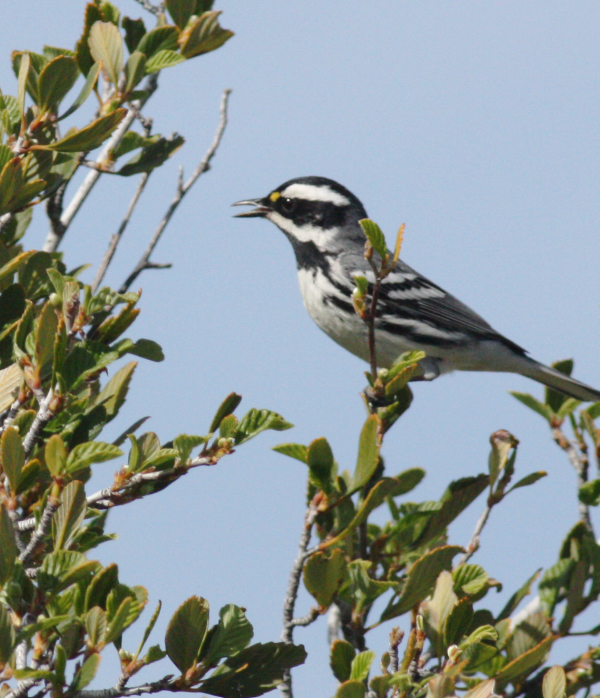
Along with a variety of species, Black-throated Gray Warblers migrate through the Colorado River Delta during fall to wintering areas in west-central Mexico.
|
Biologists from the National Audubon Society studied the abundance and concentration of 112 species of migratory land birds, week by week across the study regions that emphasize the high conservation value of California’s Central Valley and the Colorado River Delta for tens of millions of migratory birds each year. Led by Audubon’s new Migratory Bird Initiative team, biologists estimate that more than 65 million birds use major portions of the Central Valley during fall migration, with about 17 million birds using the Colorado River Delta during spring migration.
The research was published recently in Ornithological Applications, which underlines that these western regions are extremely important migratory locations at the population level for dozens of species. Audubon scientists also found that the Central Valley and Colorado River Delta are migratory “bottlenecks,” because these regions created highly concentrated numbers of birds compared to similar-sized regions at the same latitude. Protecting essential habitats in the Central Valley and the Colorado River Delta are critical in conserving populations of North American migratory birds in the future.
Spring and fall migrations can be the most dangerous times of the year for migratory birds. We understand bird migrations better than ever before, which allows us to take important steps to protect birds, explained Dr. Bill DeLuca, migration ecologist with Audubon’s Migratory Bird Initiative and the primary of author of the study. “It’s hard to overstate the importance of protecting birds – year-round – and not just during the nesting and wintering periods – if we want to secure their future.”
Using data from The Cornell Lab of Ornithology’s eBird Status and Trends team, with population estimates from Partners in Flight, Audubon biologists highlighted 3 major findings:
- 1) California’s Central Valley and the Colorado River Delta are migration hotspots for tens of millions of migratory birds as they fly south and north along the Pacific Flyway in western North America.
- 2) The tens of millions of birds that fly through these regions represent major percentages of many species’ overall populations. For example, during spring more than 27 percent of North America’s Tree Swallows migrate through the Colorado River Delta, and 80 percent of Lawrence’s Goldfinches migrate through the Tulare region of the Central Valley of California. During fall, more than 5 percent of all Black-throated Gray Warblers migrate through the Colorado River Delta, and nearly 40 percent of Anna’s Hummingbirds migrate through the Central Valley.
- 3) The Valley and Delta act as migratory bottlenecks. As birds migrate through these latitudes, they funnel into these regions. The high concentrations of migrating birds makes them especially vulnerable, indicating migratory bird conservation efforts and research should focus on these key regions.
Audubon’s Migratory Bird Initiative is working with migration researchers and conservation practitioners to use the best available migration science to help steer conservation efforts to these critical landscapes.
You can read a PDF of the research publication at https://nas-national-prod.s3.amazonaws.com/the_colorado_river_delta_and_californias_central_valley_are_critical_regions_for_many_migrating_north_american_landbirds.pdf
To review the original Audubon article, you can refer to https://www.audubon.org/news/audubon-scientists-reveal-migration-bottlenecks-used-tens-millions-birds